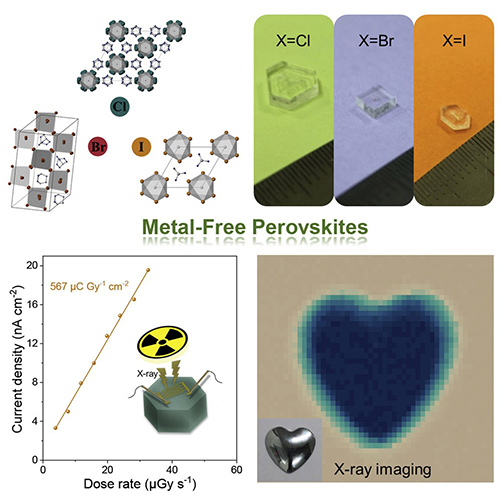Metal-free halide perovskites are novel candidates for ferroelectrics and X-ray detection. However, the molecular self-assembly of these perovskites and its influence remain unexplored.
Recently, a research group led by Prof. LIU Shengzhong from the Dalian Institute of Chemical Physics (DICP) of the Chinese Academy of Sciences (CAS) fabricated halide-modulated self-assembly of metal-free perovskite single crystals for bio-friendly X-ray detection.
This study was published in Matter on June 14.

Molecular self-assembly plays a critical role in crystal engineering for the design and fabrication of novel metal-free perovskite compounds.
After preparing DABCO-NH4X3 (X = Cl, Br, I) single crystals, the researchers investigated halide-modulated molecular assembly via hydrogen bonding in metal-free perovskites and its influence on their crystal packing, band nature, mechanical and electrical properties, as well as final optoelectronic performance.
They found that the crystal DABCO-NH4I3 with superior in-plane charge transport and lower charge effective mass exhibited higher carrier mobility. Therefore, it presented better X-ray detection sensitivity, reaching 567 μC Gyair-1 cm-2. Meanwhile, they demonstrated the feasibility of X-ray imaging had a well-defined 'heart' image.
A variety of non-metallic and organic groups readily were available for the A, B and X in crystal DABCO-NH4I3, resulting in fine-tuned properties and free of associated toxicity.
"This work benefited the understanding of molecular self-assembly behavior and was intended to inspire activities to study an assortment of novel ABX3 perovskite materials for potential biological and therapeutic applications," said Prof. LIU.
This work was supported by the National Key Research and Development Program of China, the Key Program project of the National Natural Science Foundation of China, and the National Natural Science Foundation of China.






